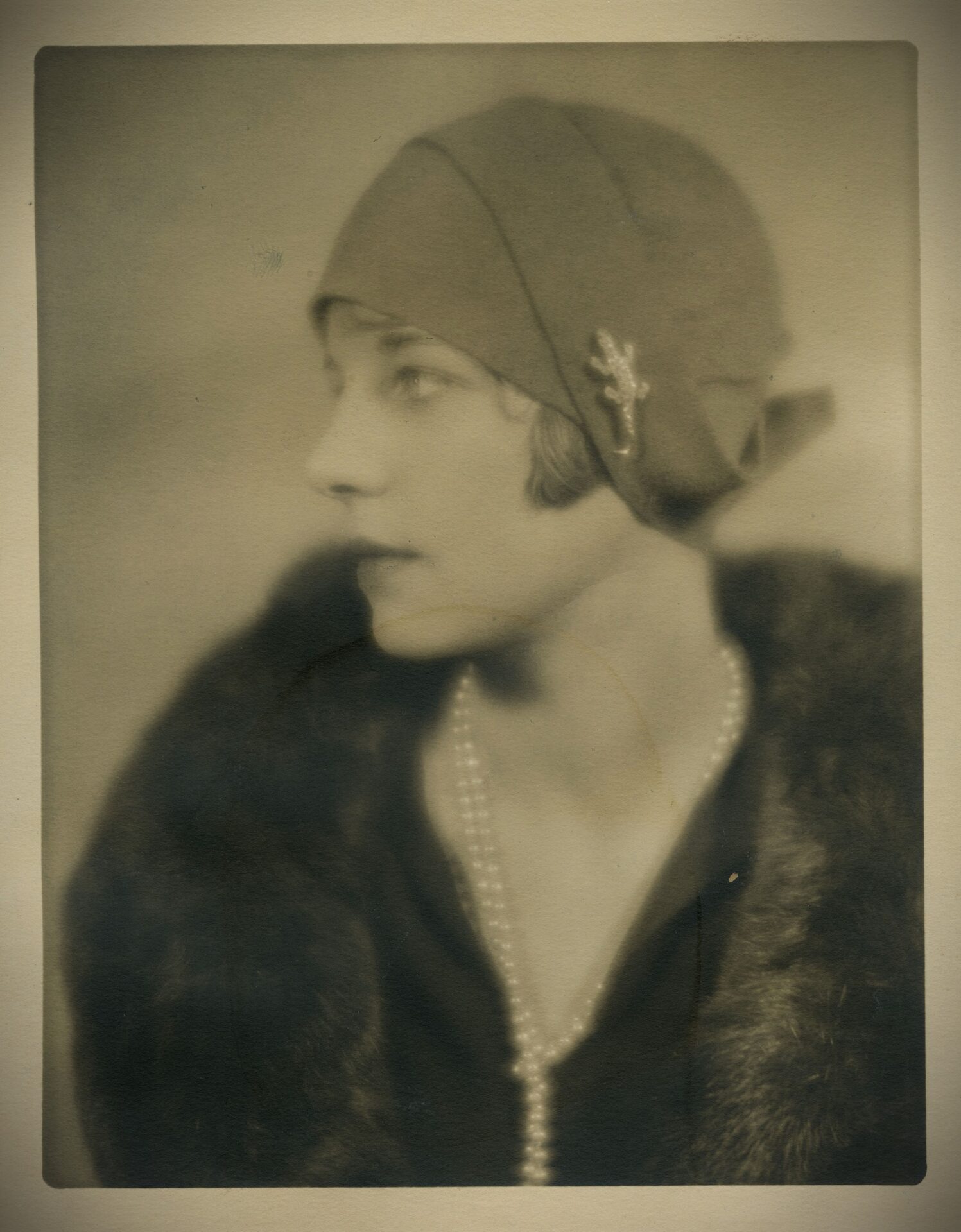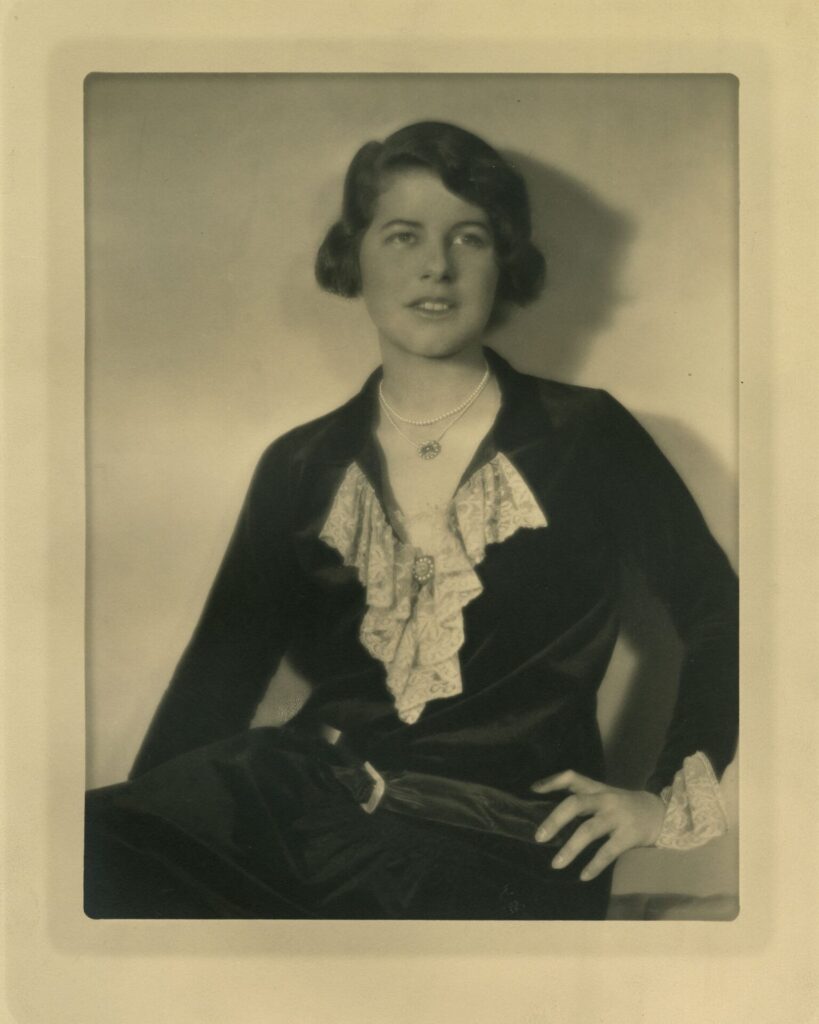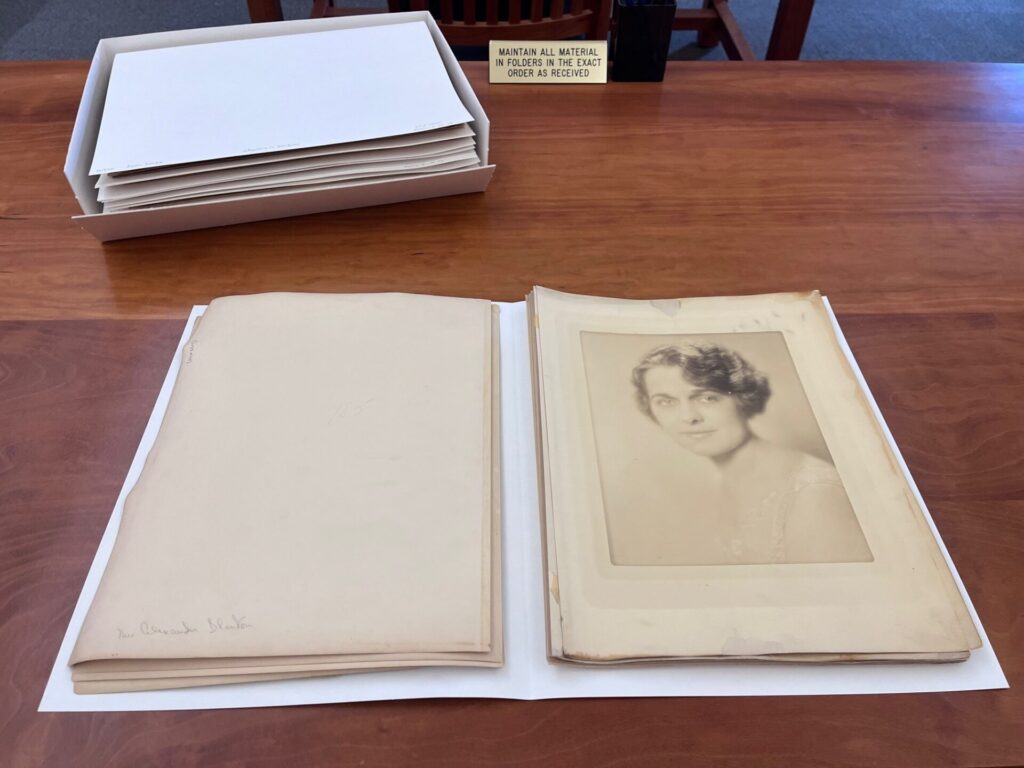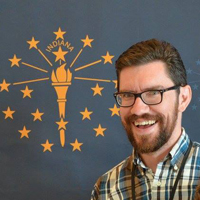
Purchase Tickets
Haunting and Elegant
August 19, 2024

Director of Collections Management Maire Gurevitz (aka my supervisor) and I have spent most of 2024 processing the records of the Junior League of Indianapolis, or JLI. The JLI is a women’s service organization that uses the power of voluntarism to affect positive change in our community. The Junior League has its roots in the settlement movement of the late 19th century, in which middle-class women created and staffed settlement houses where they provided vital services to lower-class families. I say “middle class,” but back then there were really only two economic classes: the very rich and the very poor. Settlement workers felt an obligation to try and bridge the gap. But the JLI arose a little later, after the “Great War.” Ten women established the Junior League of Indianapolis in the fall of 1921. Soon after that, they accepted forty new members, and the ranks of Junior Leaguers grew and grew. Their first local project was to create and staff an occupational therapy department at the new Riley Hospital for Children.
For the most part, processing JLI was very straightforward. We went through the papers, weeding out duplicates, removing staples and paper clips, and arranged them in new, labeled folders. To make the Junior League’s papers useable and searchable for researchers was a long and sometimes monotonous undertaking. We started with 53 very full bankers boxes of materials, plus some framed and oversized odds and ends in big plastic tubs. Six months later, we are finishing with 72 manuscript boxes of papers and six boxes of photographs. And of course, a thorough collection guide to help you find what you need.
Near the end of this process, after the manuscripts were finished and boxed, and most of the photographs had been numbered, sleeved, and foldered, I started work on an additional seemingly nondescript pile of visual material. Sandwiched in the middle of this stack I found a treasure trove of large, glamourous portraits from the late 1920s, depicting some of the earliest members of the JLI, decked out in their most fashionable outfits.

Mrs. John Joss (1903-1982), formerly Eleanor E. Taylor, a Smith College graduate. Also lived in Washington, DC and San Francisco, where she remained involved with the Junior League.
I knew right away that these 99 portraits, which I assumed had at one time formed an album, were a rare visual record of these women. I thought about how well we know the faces, names, and works of some of their husbands, with notable Indianapolis names like Vonnegut, Fortune, and Woollen. But rarely do we get such a vivid depiction of the women they spent their lives with, who bore their children, who listened to their gripes, who offered perspectives and advice, and who (let’s face it) probably suggested some of their best ideas. Wives of even the most prominent men are often obscure and nameless in the historical record. And though these portraits are identified on the back, the names they are given are those of their husbands: Mrs. John Joss; Mrs. Dudley A. Pfaff; Mrs. August Bohlen, etc. But with a little digging, we can discover that they were once Eleanor E. Taylor, Frances Parsons, and Katherine Lesh. Sometimes the maiden name is even more famous than the married name. For example, Mrs. W.R. Sinclair, wife of a Kingan & Co. executive, was Emily Taggart, daughter of Democratic kingpin Thomas Taggart.

Though never available for public review before now, these portraits got some publicity 65 years ago, when they attracted the attention of Indianapolis News reporter Filomena Gould. “Haunting and Elegant” is how Mrs. Gould described the album. Haunting, probably, because though most of the subjects were still living in 1959, others, whom Gould probably knew, had passed away. And here they were in their youth, posing proudly in their pearls, furs, and cloche hats. Mrs. Gould tracked down some of those remaining and questioned “some of today’s smart women” about how the album came into being.
She wrote, “They recall that a photographer from Chicago came here and sold them the idea for an album so elegant, … first and one of the most fabulous of its kind to feature a local feminine membership, one by one.” She continued, “A schedule of appointments was set up, with the Propylaeum [the] scene of the shooting. Every member, save those who were out of town or virtually under ether, donned her best and arrived to see the birdie.”
Contact reference@indianahistory.org for information about how to make an appointment to come in and see the album (we have all new carpeting!). Otherwise, keep an eye on our digital collections, where these and other JLI materials will appear soon!









